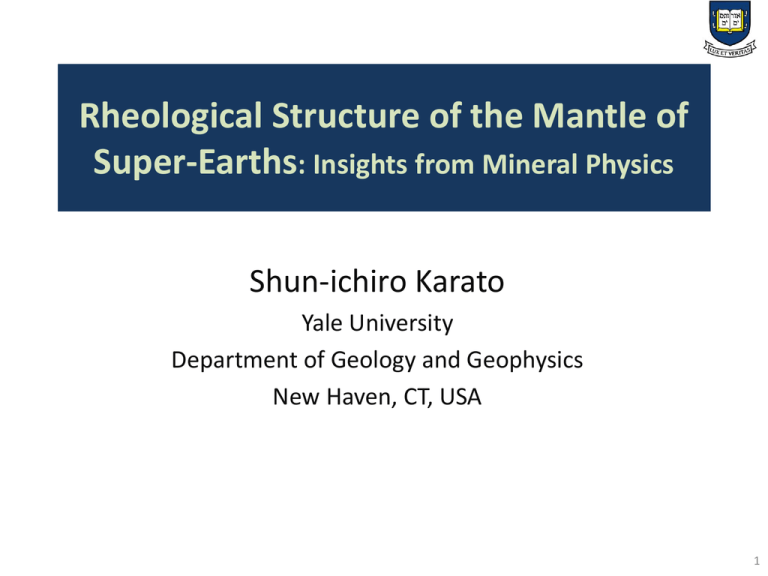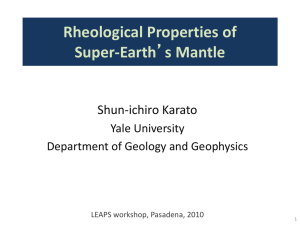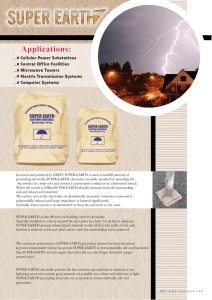Rheological Structure of the Mantle of Super-Earths Shun-ichiro Karato
advertisement

Rheological Structure of the Mantle of Super-Earths: Insights from Mineral Physics Shun-ichiro Karato Yale University Department of Geology and Geophysics New Haven, CT, USA 1 Dynamics of a super-Earth mantle convection, thermal evolution Does plate tectonic operate on super-Earths? Does dynamo operate in super-Earths? tidal heating orbital evolution How much have exo-planets migrated since their formation? Rheological properties 2 Internal structure of a super-Earth P to ~ 1 TPa (1000 GPa) T to ~5000 K 3 Viscosity of planetary materials depends strongly on T and P. P-effect is potentially very large! h = h0 exp * H* = h exp ( E*+PV ) ( 0 RT RT ) 4 Viscosity-mass relationship Viscosity of solids increases with P at low P. Is this valid at higher P in super-Earths? 5 h µ T -q Py conventional models new model 6 Internal structure of a super-Earth (B1 B2 transition) (dissociation of post-perovsktie (?), Metallization (?)) MgO is the softest phase in a super-Earth’s mantle. 7 h = h0 exp * ( HRT* ) = h0 exp ( E*+PV RT ) MgO (V* decreases with depth (pressure)) 8 Viscosity changes also with crystal structure. normalize viscosity normalized temperature B1 MgO (B1 or B2) is the softest mineral in the deep mantle. 9 Materials with B1 structure are the softest among various oxides. Materials with B2 structure are even softer than those with B1 structure. 10-4 10-5 stress=1 MPa B2 sC C 10-7 l 10-8 aC N l strain-rate, s -1 10-6 10-9 B1 10-10 10-11 -12 10 1 1.2 1.4 1.6 1.8 2 Tm/T Fig. 3a (Karato) 10 Viscosity changes when mechanisms of atomic motion change. V*vacancy >0 V*interstitial <0 vacancy mechanism interstitial mechanism (from (Ito and Toriumi, 2007)) (from Karato (1978)) 11 B1 12 Conclusions • Viscosity of the deep mantle of a super-Earth might decrease with pressure. • the Rayleigh number increases with planetary mass reduces plate thickness, increases convective stress with planetary mass making plate tectonics possible in large planets, which would otherwise be difficult. high tidal energy dissipation 13 14 1 Q µ h, 1 () 1 a h (low viscosity higher heating rate, faster orbital evolution) 15 Could plate tectonics operate on a super-Earth? How does resistance and driving force for plate tectonics change with planetary mass? resistance: plate thickness Rayleigh number driving force: convective stress Rayleigh number Ra = r ga (T -Ts ) d 3 kh A large Rayleigh number high stress, thin planet promote plate tectonics How does the Rayleigh number change with planetary mass? P-effect on viscosity is often ignored. Is it justifiable? (Valencia et al., 2007) 16 P to ~1 TPa (1000 GPa) T to 5000 K 17






